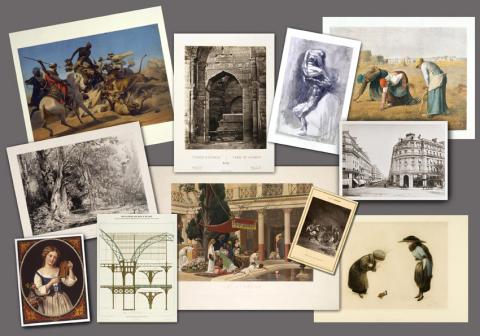Goupil Museum
Dedicated to the image, its techniques and uses in the 19th century, it contains the collections of the House of Goupil, a dynasty of art publishers and international gallery owners based in Paris who were active from 1827 to 1920: the family primarily published reproductions of famous paintings, those of museums and those exhibited in the Paris Salons. On the decline of the House of Goupil, Vincent Imberti, a Bordeaux art merchant, purchased the collection, which he brought to Bordeaux. On his death in 1987, his grandson Guy Imberti donated a set of photographs to the Town of Bordeaux. In 1990, he sold the town the rest of the images, engraved coppers, stone lithographs etc. The town then decided to create a museum which it installed in an industrial building in Cours du Médoc.
Since 1998, the museum has been integrated into and is administered by the Museum of Aquitaine. While its collections are unrelated to a local context, the museum constitutes an active satellite of the main institution, and its collections are a valuable addition to the town's cultural resources.
The Goupil collections consist of 70,000 photographs, 46,000 stamps, 7,200 matrices (engraved coppers, stone lithographs, typogravure and chromotypogravure blocks, glass negatives) and one thousand books and illustrated reviews.
The museum does not have a permanent exhibition space and currently functions as a graphic design resource (collections accessible by appointment and for relevant studies). The collections are presented through temporary exhibitions and loans to French and foreign institutions and museums. The great variety of images, both from the technical and thematic point of view, enables presentations of very diverse types, from monographs (William Bouguereau, Jean-Léon Gérôme) to more sociological and historical approaches (Children's games, Memories of the 18th century, An image on a wall etc.).
The Goupil collection is unique in the world, and arouses both the interest of art historians and the curiosity of the contemporary world at a time when new communication technologies are provoking a second revolution in the making of images.


